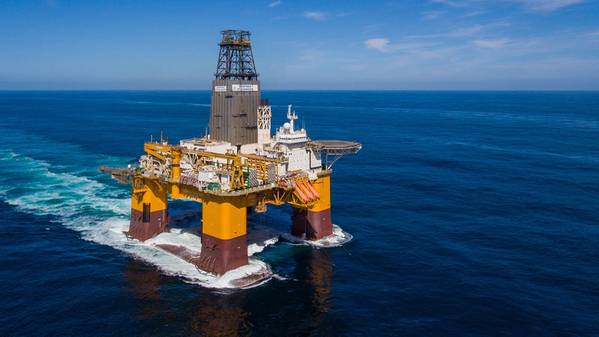
The Norwegian oil company Equinor has completed the drilling of an appraisal well to test a 2009 offshore discovery in the North Sea, off Norway. The appraisal well, 16/2-23 S, came up dry, with traces of hydrocarbons, the Norwegian Petroleum Directorate said.
Using Odfjell Drilling's Deepsea Stavanger semi-submersible drilling rig, Equinor drilled the well some 7.5 kilometers east of the Edvard Grieg field and 10 kilometers west of the Johan Sverdrup field in the North Sea.
The original discovery, made using the West Epsilon drilling rig, was proven in 2009 in reservoir rocks presumably from the Jurassic/Triassic, Before the well 16/2-23 S was drilled, the resource estimate for the discovery was between 1 and 2.9 billion Sm3 of recoverable gas.
The objective of the well was to delineate the 16/2-5 discovery and to prove additional volumes of petroleum in a graben structure from the Jurassic/Triassic with better reservoir properties, in the southern part of the Utsira High, NPD said.
"The well encountered traces of hydrocarbons in conglomerate rock presumably from the Jurassic/Triassic with poor reservoir quality.
The reservoir interval in the 16/2-5 gas discovery was cored in the appraisal well, which encountered graben-filled sediments with a thickness of around 260 meters, with conglomerate rocks with poor reservoir quality. Traces of oil were encountered in an interval of around 80 meters.
The well is classified as dry with traces of hydrocarbons. Pressure points in the water zone confirm communication with the discovery in well 16/2-5, made in 2009," NPD said.
NPD said the result of the 16/2-23 S appraisal well indicated that the resources had been considerably reduced compared with previous estimates. The revision of the volumes for the 16/2-5 discovery will be completed when final data from the well is available, the regulator said.
"Extensive data acquisition has been conducted in the well. Hydrocarbon gradients could not be established, and no liquid samples were taken,"NPD said.
This is the 18th exploration well in production licence 265. The well was drilled to a vertical depth of 2100 meters below sea level and terminated in conglomerates presumably from the Jurassic/Triassic. Th water depth at the site is 110 meters. The well has been permanently plugged and abandoned.
Equinor will now move the Deepsea Stavanger drilling rig to drill wildcat well 35/10-9 in production license 827 S.
Equinor recently shared its exploration strategy, which includes drilling for volumes in mature areas, where discoveries can be tied into existing infrastructure, and drilling between 20 and 30 exploration wells each year.
Around 80 percent of the exploration wells will be drilled in familiar areas near existing infrastructure, but certain new areas and ideas will be tested, Equinor said.
Equinor further said the wells would be drilled based on three main riteria: high profitability and low break-even prices, short payback time and low carbon intensity.